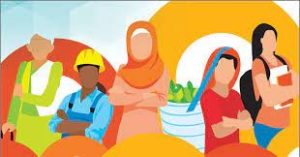
Introduction:
Globally, gender inclusion and diversity have become crucial aspects of establishing progressive and equal workplaces. Organizations worldwide recognize the importance of creating environments that welcome employees of all genders and provide equal opportunities for development and success. In South Asia, Bangladesh and India have garnered attention in recent years for their efforts in addressing gender inclusion and diversity, despite their similar cultural and historical backgrounds. However, these two nations have taken different approaches in terms of their economies, social norms, and legal systems. Nonetheless, gender equality, occupational discrimination, and women’s empowerment continue to be challenges in both countries. Governments, public groups, and business organizations in various nations have implemented numerous initiatives to tackle these issues. Comparing the policies of inclusiveness and gender diversity in Bangladeshi and Indian workplaces is inherently essential for several reasons. Firstly, it provides an opportunity to identify the specific sociocultural factors that influence each nation’s projects. Secondly, by analyzing these programs’ strategies, regulations, and outcomes, valuable insights can be gained to support future efforts in advancing gender equality in the workplace. Lastly, this type of study can contribute to the existing body of knowledge on gender equality by highlighting successful approaches and potential challenges in different contexts.
Gender Diversity Initiatives: A Comparative Examination


- Gender dynamics and cultural context:
The workplace dynamics related to gender in Bangladesh and India are significantly influenced by their respective cultural backgrounds. In India, the vast cultural environment plays a crucial role in shaping the perception of gender roles in different regions and communities. On the other hand, Bangladesh’s predominantly Islamic culture often leads to restrictive expectations for women, impacting gender standards. It is important to recognize and address these cultural intricacies when implementing gender diversity programs in order to ensure their effectiveness and relevance.
- Legal frameworks and implementation challenges:
Both Bangladesh and India have implemented laws to address gender discrimination in the workplace, yet challenges persist in their effective implementation. In India, the legal framework has encouraged more open discussions about sexual harassment, resulting in increased reporting. However, there are still gaps in implementation and under-reporting remains a concern. Similarly, Bangladesh’s labor laws are progressive, but face obstacles in implementation, particularly in the informal sector. Strengthening enforcement mechanisms and raising awareness are crucial steps to address these challenges.
- Corporate policies and procedures:
- Businesses in both India and Bangladesh employ various strategies to promote gender diversity in the workplace. In India, businesses often emphasize diversity in their boardrooms, driven by legal requirements. These initiatives have shown promise in increasing the representation of women in leadership positions. On the other hand, corporate efforts in Bangladesh often focus on community engagement and educating families about the benefits of women’s employment. These programs underscore the importance of community involvement in promoting gender inclusivity.
- Representation & leadership opportunities:
- Achieving gender parity in leadership positions can be a challenging task. While the implementation of women directors’ quotas in corporate India has increased board representation, concerns about tokenism still persist. In Bangladesh, women are underrepresented in leadership positions due to deep-rooted gender norms. To bridge the leadership gap, both countries can implement coaching initiatives, leadership development programs, and targeted training to empower women and enhance their leadership skills. These efforts can help overcome barriers and create a more inclusive and diverse leadership landscape.
- Pay equality & economic empowerment:
- Ensuring economic justice requires addressing pay fairness. Companies are aggressively providing compensation statistics, and India has made progress in addressing the gender pay gap. The presence of the marketplace in Bangladesh contributes to the persistence of gender-based pay disparities. These disparities in both areas may be closed with the use of open wage structures, salary audits, and skill development programs.
- Remote work and technology:
- The COVID-19 epidemic has altered the nature of the workplace and offers special chances for gender inclusion. By providing flexible work schedules, telecommuting choices might lessen the difficulties experienced by women, particularly those living in traditional communities. To enable equal participation in teleworking programs, digital gaps and disparate availability of technology have to be taken into consideration.
- Cultural sensitivity and staff resource groups:
- Both nations have addressed gender diversity in employee resource groups (ERGs). Safe areas to exchange experiences and opinions are offered by these forums. To guarantee that ERGs are well accepted and successful in bringing about change, conservative cultures must carefully consider cultural sensitivities while drafting them.
- Education and skill-building:
- Empowering women through education and skill-building is a recurring subject. India has a strong focus on education, which has boosted the proportion of women working in official jobs. Initiatives for skill development based on micro capital in Bangladesh have given rural women more influence. By coordinating education with market demands, both nations can prepare women for a variety of employment options.
- Community Engagement & Advocacy:
- In conservative societies, in particular, community engagement is crucial. Bangladesh’s grassroots efforts, such women’s clubs driven by microfinance, show the possibility for community-led transformation. India can benefit from these strategies in order to improve the networks of local advocacy and support.
- Intersectionality & Inclusivity:
- An inclusive strategy must consider how identities are intertwined. Initiatives should consider the difficulties experienced by LGBTQ+ people and those with disabilities. The effectiveness of gender diversity programs is increased by creating safe and welcoming settings for all underrepresented groups.
Moving toward a shared goal
- Both Bangladesh and India are reaching a turning point in their efforts to promote gender equality. Despite having divergent paths, they are united by a shared ambition for workplaces that represent the full potential of both sexes. Although both nations have made great progress, obstacles still exist. The first step in developing focused remedies that can bring about long-term change is acknowledging these problems.
Sustainable Development and Perseverance:
- All stakeholders must maintain a constant commitment if inclusion and diversity of genders are to advance sustainably. Governments, corporations, civil society organizations, and people must all work together to advance the cause. While short-term successes are praised, long-term transformation necessitates steadfast commitment to removing obstacles and altering perspectives.
Innovative Approaches and Flexibility:
- Gender inclusion and diversity are constantly changing environments. Both nations must continue to be flexible in their approaches and open to using cutting-edge measures that consider shifting socioeconomic factors. Their efforts can advance by utilizing technology, accepting flexible work schedules, and fostering a culture of lifelong learning. International perspective and motivation
- India and Bangladesh might be motivated by examples of achievement from throughout the world as they travel their individual paths. International best practices provide essential information about what functions well and what doesn’t. They may hone their techniques and take a nuanced approach which fits with their own socio-cultural situations by studying their observations of other nations.
- A Request for Cooperation
- Collaboration is recognized as a potent transformation agent. Despite their geographical distance from one another, Bangladesh and India have the same goal in mind when they set out to design workplaces that embrace inclusion and diversity. They may increase their influence and advance more quickly by creating cross-border relationships, exchanging information, and learning from one another’s experiences.
- A Future of Empowerment and Equality:
- The path to achieving gender inclusion and diversity is a transforming one. It’s not only concerning leveling equality within workplaces; it’s also about making a positive contribution to society as a whole. Economy-drivers, innovators, and role models for future generations are empowered women. Bangladesh and India can show how to strive for a future in which both genders thrive and every person’s potential is achieved through supporting diversity.
Conclusion: A Path to Equitable Futures
The histories of both countries tell a story of development, challenges, and possibilities in the realm of gender inclusion and diversity. This research highlights the idea that the pursuit of workplace fairness goes beyond organizational boundaries and is interconnected with the larger societal fabric. As we conclude our investigation, several clear realities emerge and point towards a more inclusive future.
Collective Transformation: Gender inclusion and diversity have the potential to bring about transformative change that transcends boundaries. Achieving this goal requires the cooperation of governments, corporations, communities, and individuals, as it is a communal effort. India and Bangladesh are at the forefront of this collaborative potential and are poised to drive significant change.
Rooted within Culture, Breaking Norms: Despite deeply ingrained cultural norms, they can be overcome and even serve as catalysts for change when approached with tact and adaptability. Workplaces can become centers of growth that reflect and influence societal evolution by incorporating inclusive principles into their cultural fabric.
Maintaining Progress: The journey towards equal employment opportunities is not a linear one; it is an ongoing and evolving endeavor. Both nations have demonstrated resilience in the face of challenges, consistently moving forward despite setbacks. Sustaining progress requires commitment, adaptability, and a willingness to learn from both successes and failures.
Data-Driven Empowerment: Employing data-driven decision-making has significant advantages in promoting gender inclusion and diversity. Organizations can track developments, identify inequalities, and adjust strategies by measuring progress using comprehensive metrics, which supports the development of evidence-based solutions.
An inclusive workforce encompasses all identities and acknowledges the interconnectedness of gender with other factors such as race, ethnicity, and socioeconomic status. By recognizing the richness of the human experience, organizations can ensure that diversity programs are truly equitable and leave no one behind.
Global Ripple Effect: Gender diversity efforts have a ripple effect that extends beyond the confines of workplaces in India and Bangladesh. Their initiatives can inspire others and contribute to a global narrative of empowerment and equality.
Bangladesh and India serve as vibrant contributors to the tapestry of gender inclusion and diversity. Their experiences contribute to a more inclusive world as they strive towards fair workplaces. This comparative study highlights the challenges faced and the progress made, while also showcasing the transformative power of unwavering dedication.
Both nations are making significant strides towards creating a future that belongs to all genders, where workplaces reflect the diverse beauty of the world by embracing diversity and promoting inclusion.
The path towards gender inclusion and diversity is dynamic and ever-evolving. It requires perseverance, flexibility, and a willingness to challenge ingrained biases. While both nations have made impressive progress, there is always room for improvement. It is crucial for companies to continue learning from one another, adapting global standards to their specific contexts, and cultivating a work environment where everyone, regardless of gender, can thrive.
The achievement of gender inclusion and diversity in a rapidly changing world is a testament to social progress, extending beyond workplace equality. As these two nations chart their respective paths, their shared commitment to inclusion and diversity has the potential to ignite a larger revolution that transcends borders. Through their efforts, they can help reshape the workplace paradigm, empowering individuals, promoting diversity, and building a more just future for generations to come.
Empowering women is crucial in preventing exploitation and prejudice. Women’s empowerment contributes to reducing the gender gap, achieving equality, and fostering self-worth, enabling them to make their own decisions and have a voice in society. Economic growth and women’s empowerment are considered two sides of the same coin. The World Development Indicators’ sustainable development goals state that gender equality will grant autonomy to all women and girls by 2030. Women are the pillars of a strong and prosperous society, as they can effectively lead a family and serve as a child’s first teacher. By educating and empowering women, we can create a society where everyone strives for improvement, leading to progressive economic growth. Mahatma Gandhi once said, “If you educate a man, you educate an individual, but if you educate a woman, you educate a whole family.”
The comparative analysis of gender inclusion and diversity in job settings in Bangladesh and India highlights the remaining challenges while emphasizing the progress made. Through social awareness, business policies, and legal frameworks, both nations have taken steps to improve workplace equality. However, deeply entrenched cultural norms, gender biases, and limited access to education and skill development still hinder the full realization of gender equality and inclusion. India has made strides towards a more inclusive workplace through regulatory measures, business initiatives, and increased female leadership participation. However, the gender wage gap and the need to balance work and home responsibilities necessitate a genuine commitment to achieving an egalitarian workplace.
Similar progress in promoting inclusion can be observed in Bangladesh, with a focus on labor regulations, NGO activities, and women’s involvement in key industries. The challenges women face in education, occupational safety, and cultural expectations highlight the importance of comprehensive approaches to overcome these barriers. Ultimately, collaboration between governments, corporations, civil society organizations, and individuals is necessary to advance gender diversity and inclusion. By learning from each other’s experiences and driving real change, both Bangladesh and India can create workplaces where everyone, regardless of gender, is empowered to succeed and contribute to society.
The collective journey towards gender equality serves as an example of the transformative potential of inclusivity in both the workplace and society at large. The study on managing diversity in multinational companies (MNCs) in Bangladesh and India presents a complex and nuanced picture. It underscores the need for fostering an inclusive and diverse environment while considering the distinctive cultural, social, and economic conditions of each country.
MNCs encounter a rich tapestry of diversity in both India and Bangladesh, encompassing differences in gender, religion, ethnicity, language, and more. While these differences can foster creativity and innovation, they can also present challenges in promoting effective teamwork, communication, and harmonious coexistence among employees.
The research emphasizes the importance of tailoring diversity management strategies to the unique cultural dynamics of each country, rather than adopting a one-size-fits-all approach. It highlights the crucial role of leadership responsibility and commitment in the success of diversity programs. When company leaders support inclusion and diversity, it sends a powerful message to all employees, encouraging them to embrace differences and contribute their unique perspectives. The study also underscores the importance of establishing clear rules, procedures, and mechanisms to address bias and discrimination. This reinforces the MNC’s commitment to social responsibility and ensures a fair working environment. Cross-cultural training is a significant facilitator for enhancing international understanding and reducing misconceptions within a diverse workforce. By promoting cultural sensitivity and intercultural competency, MNCs can foster a more cohesive and collaborative staff, leading to increased overall productivity and reduced potential conflicts.
The report also emphasizes the significance of ongoing assessment and adaptation of diversity management strategies. MNCs must be prepared to adjust their approaches to meet new opportunities and challenges as workforce dynamics evolve over time. To achieve this, a continued commitment to research, data collection, and feedback loops is necessary to evaluate the effectiveness of diversity programs and make informed adjustments.
It is important to note that this research has limitations and may not be directly applicable to other countries or contexts outside of India and Bangladesh. Additionally, the rapidly changing corporate environment and sociocultural factors call for further investigation beyond the scope of this study.
Managing diversity in MNCs operating in Bangladesh and India requires a comprehensive approach that values diversity, embraces inclusion, and tailors strategies to local conditions. By doing so, MNCs can cultivate a happy and thriving workforce that not only flourishes within the company but also positively impacts the wider society. The findings from this study can provide valuable insights for businesses navigating the complexities of diversity in an increasingly interconnected world, as globalization continues to integrate the global economy.
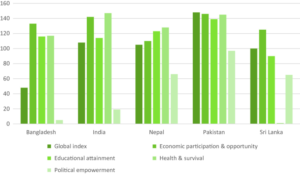
Al Mahmud
(Al Mahmud is an accomplished writer from Bangladesh who produces original, unique essays and articles on a variety of subjects. His goal is to offer thoughts, ideas, and facts in a distinctive and interesting way while also giving readers new insight and information on a range of subjects. His undergraduate degree, a B.B.A (Hons) in HRM, was completed with a distinction of first-class and an 8.71 cumulative grade point average in Pandit Deendayal Energy University, Gujarat, India. In addition, he completed a Coursera online course, worked in a rural area of India, and served as an editor for the news website The Spotlight. By doing this, he makes sure that his writing stands out in the sea of current information.)
References
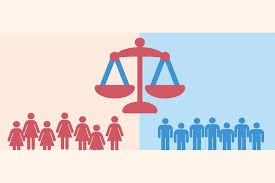

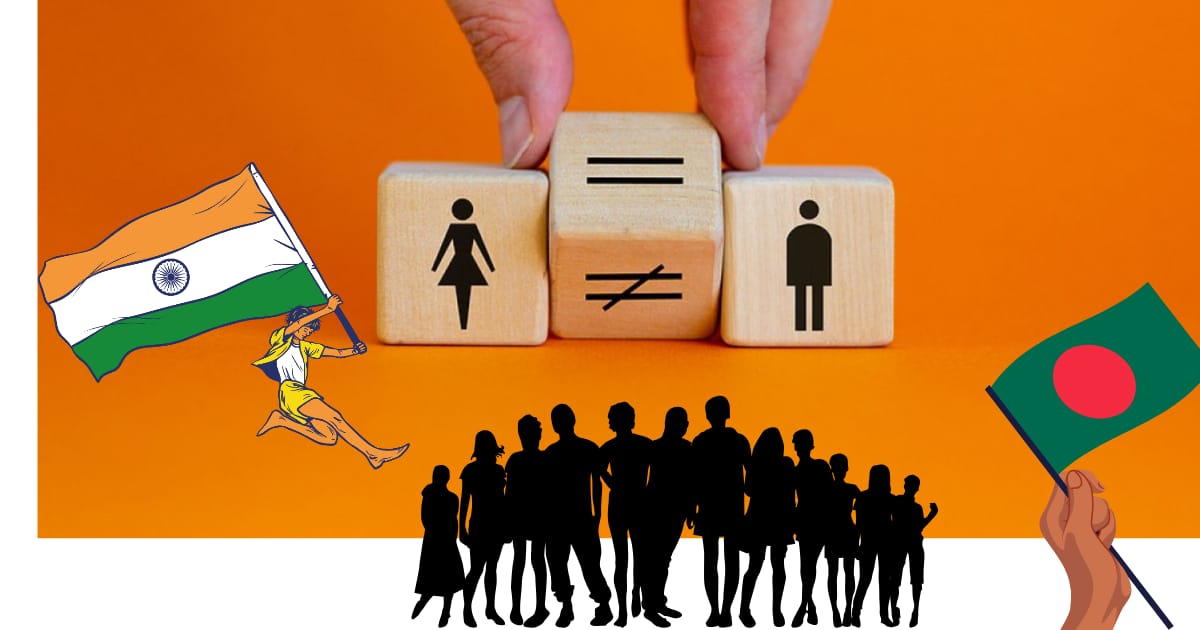
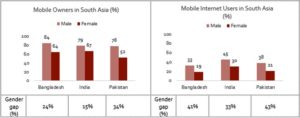



Pretty! This has been a really wonderful post. Many thanks for providing these details.